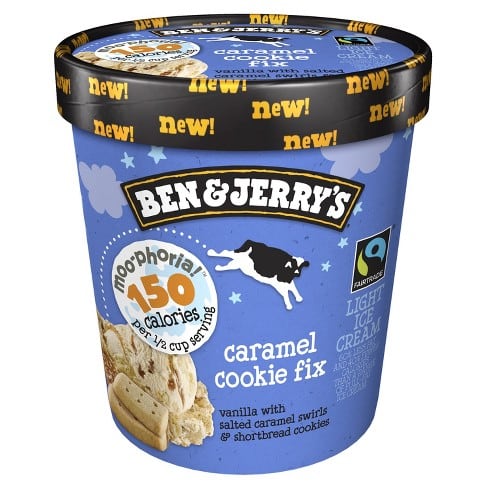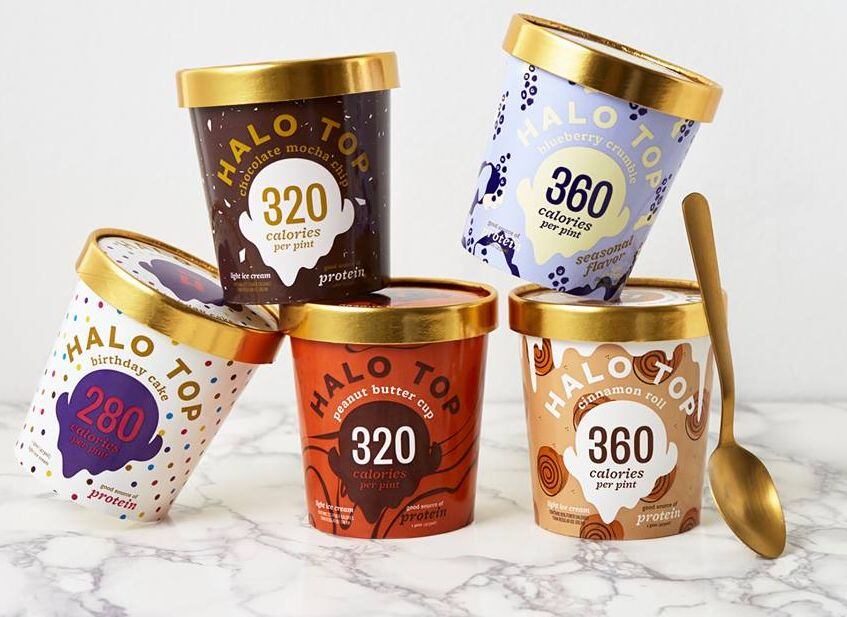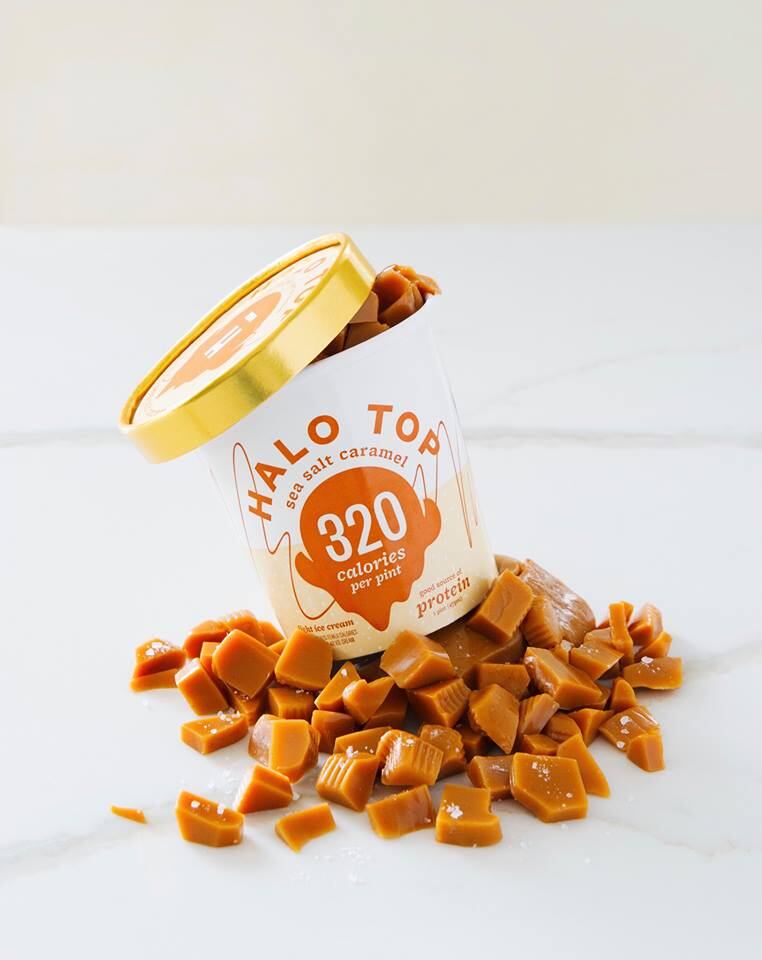A light ice cream sweetened with erythritol, organic cane sugar and organic stevia leaf extract, Halo Top's sales growth has been nothing short of meteoric since it launched in 2012, with sales in the four weeks to July 16, 2017 overtaking those of category giants from Ben & Jerry's to Breyers, according to IRI data.
However, like many successful CPG brands, it has now become the target of plaintiff's attorneys, who accuse it of misleading shoppers by presenting itself as a regular ice cream, rather than a light ice cream.
In a complaint* – filed on May 9 in New York vs brand owner Eden Creamery by the same attorneys behind the recent complaint vs That’s It Nutrition - the plaintiff Josh Berger alleges that:
- The products do not comply with federal law because the term ‘light ice cream’ is in a “miniscule font off to the lower right of the label, away from the brand name and flavor in a color pattern which causes it to be difficult to see based on the background color in an area of the container prone to ice or condensed water obstructing it and no reference foods are indicated next to the ‘light ice cream’ text nor anywhere else on the label.”
- To qualify as light ice cream, products must possess “performance and other characteristics, such as physical properties, flavor characteristics, functional properties – similar to those of the standardized food [ie. ice cream],” and as Halo Top contains inulin and erythritol, its organoleptic qualities do not resemble ice cream.
- The ‘all natural’ and no artificial sweeteners’ claims on the back of the label are false and misleading owing to the presence of erythritol, which is manufactured via an industrialized process reasonable consumers would consider unnatural.
- Consumers associate the color yellow on the packaging with butter and cream, which reinforces the perception that the products will be ice cream (not light ice cream).
- If you type ‘Halo Top’ into google, ads come up with headers including America’s #1 ice cream and Halo Top Ice Cream – when the product is in fact a light ice cream.

Ronald Rothstein: ‘This case seems weak’
A Halo Top spokesperson said the brand does not comment on pending litigation.
So what do legal experts make of the case?
Not a great deal, according to attorneys quizzed by FoodNavigator-USA this week.
Winston & Strawn partner Ronald Rothstein told FoodNavigator-USA that overall, “This case seems weak.”
The suggestion that consumers associate the yellow color with butter or cream is “implausible,” he argued, while the FDA issues “should not be enforceable by this private plaintiff.”
As for the natural claims, he said: “They suffer from a primary jurisdiction problem [the FDA is currently looking into natural claims, and several cases have therefore been stayed on primary jurisdiction grounds until the FDA weighs in on this issue].”
Laura Venker: Plaintiff has soured his argument before he’s truly begun
As for the complaint’s assertion that competitors in the light ice cream category such as Ben & Jerry’s and Breyers shout about their ‘light’ ice cream credentials much more prominently on pack, said McGuireWoods associate Laura Venker, this is not supported by a look at their latest packaging.

“I believe plaintiff has soured his argument before he’s truly begun by mischaracterizing the state of the market, and therefore consumers’ expectations. I could not find any evidence that the competitors’ labels referenced in the complaint are still in use. To the contrary, it appears that Halo Top’s competitors have adopted new labels that bear similarities to the aspects of the Halo Top labels that the plaintiff challenged – from the placement of the word “light” to the tone-on-tone color scheme to the absence of a more detailed explanatory statement than a simple acknowledgement that this is a light, rather than full fat, ice cream.”
Meanwhile, one of the two competitors cited in the complaint also uses erythritol in its light ice creams, while several other competitors not identified in the complaint use erythritol and inulin in their light ice creams, undermining the argument that these ingredients cause Halo Top’s product to “exhibit different physical and organoleptic properties than other light ice creams.”
Ryan Kaiser: ‘A huge stretch…’
Amin Talati Upadhye attorney Ryan Kaiser was equally skeptical about some elements of the case, explaining:
“Like many food class actions we’ve seen, the plaintiff (or rather, his attorneys) have taken a technical labeling requirement and are trying to combine it with non-label marketing content [the Google search terms etc] to support a claim that the overall marketing of the product is misleading.
“Assuming defendant’s placement and/or sizing of the ‘light ice cream’ statement of identity is compliant with the regulation, is anyone really suffering harm from that? Probably not. But if you combine that with off-label (online) promotion that says ‘ice cream,’ and consider the on-label and the off-label claims in tandem, you can see how one might argue that the company is promoting the product as ice cream. Again, is anyone harmed? Probably not.

“I will say though, that I think it is a huge stretch to say that consumers equate the term ‘halo’ with the color yellow, which they in turn associate with cream. But you’ve got to applaud their creativity.”
You’ve got to applaud their creativity
He added: “Where they’re going to run into problems with this case as a class action, I believe, is in proving that the class of consumers they’re purporting to represent all saw the same combination of marketing elements (i.e. on- and off-label), and reached the same conclusions about the product.
“Variability in marketing claims is the killer of many class certification attempts. As the complaint is drafted, it would appear that to certify a class, the plaintiff will need to prove that all ‘class members’ actually read both the online claims and the on-label claims, and were misled by the combination. I think that’s going to be a stretch.”
*The case is Josh Berger et al v Eden Creamery 1:18-cv-02745 filed May 9 in the Eastern district of New York by Joshua Levin-Epstein of Levin-Epstein & Associates PC, and Spencer Sheehan of Sheehan & Associates PC.
They allege negligent misrepresentation, breach of express warranty and implied warranty of merchantability, fraud, and unjust enrichment and seek to represent a nationwide class of consumers and "all consumers in New York State who purchased any products bearing any actionable representations during the statutes of limitation periods."

'Dieting’ and ‘reduced fat’ have become passé phrases in the world of packaged food replaced with terms like ‘clean label’ and ‘locally-sourced’, so what can explain low-calorie ice cream alternative Halo Top’s dramatic takeover of the frozen dessert case, outselling veteran brands such as Nestlé Dreyers and Unilever’s Ben & Jerry’s?
